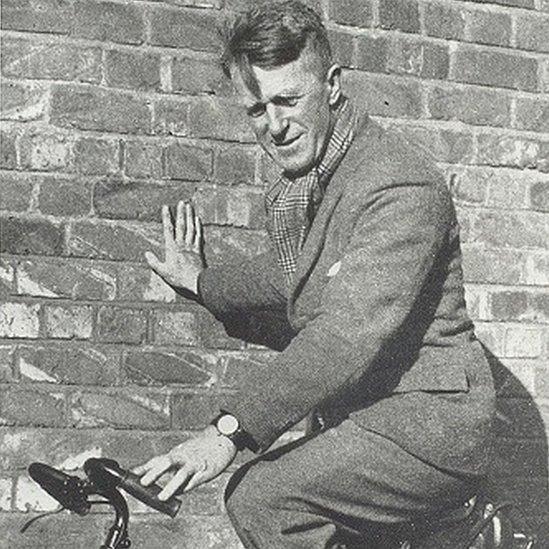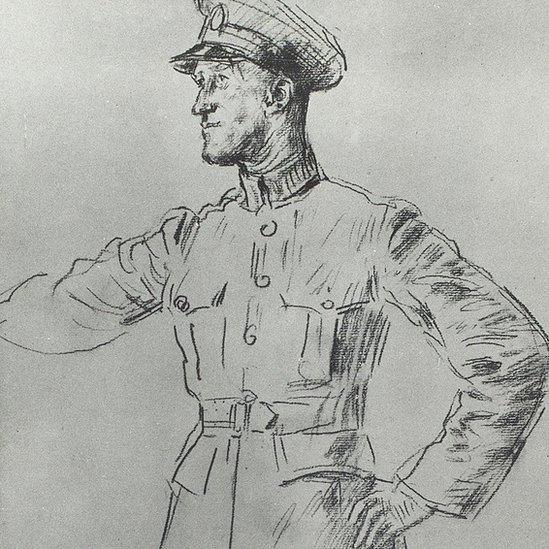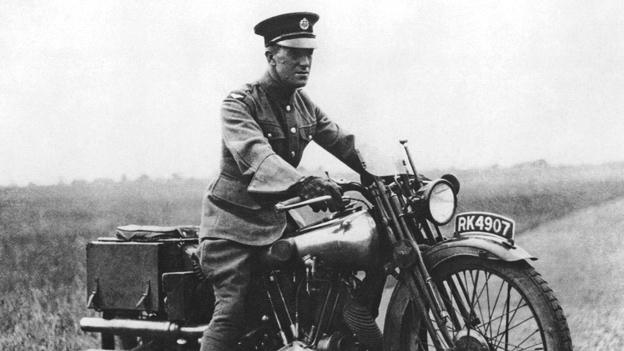Lawrence of Arabia images uncovered at Public Record Office of Northern Ireland
- Published

The photographs include two of TE Lawrence astride the motorcycle he was fatally injured on in May 1935
A series of forgotten photographs of Lawrence of Arabia have been uncovered at the Public Record Office of Northern Ireland (PRONI).
TE Lawrence was made famous by his World War One exploits in the Middle East.
The images include two of him astride the motorcycle he was fatally injured on in May 1935 in Dorset.
He died six days after the incident, aged 46, only two months after leaving military service.
PRONI member of staff Colin Shaw said he found the photographs when he was researching a query.
The set of 58 pictures are from the notes and papers of Lawrence's biographer, Harford Montgomery Hyde, a former MP for Belfast North.
Mr Shaw said that although he had seen the David Lean directed film about Lawrence from the 1960s, he was amazed at how much more there was to the scholar, writer and soldier.
"For somebody who died at a relatively young age, 46, he achieved so much," he added.
"He was a practising archaeologist in the Middle East before he joined the army.

Lawrence captured in Bridlington
"There is a lot of interest in the First World War at the moment because of the centenaries, so I was fascinated by his distinguished military career.
"After the war he experienced difficulties readjusting to post-war life, and enlisted in the RAF under the pseudonym of John Hume Ross, and then the Royal Tank Corps where he, again, enlisted under another pseudonym - T. E. Shaw."
'Pioneering study'
Mr Shaw added that Lawrence had "refused a knighthood, worked for Winston Churchill, and unlike the 6ft 3ins Peter O'Toole (who played him in the movie), he was only 5ft 5ins".

This sketch was also among the items uncovered at the PRONI
"I subsequently found out that Hugh Cairns, the neurosurgeon who tended his injuries, would later write a pioneering study entitled 'Head injuries in motorcyclists - the importance of the crash helmet', which would led to the British Army ordering all despatch riders to wear safety helmets in November 1941," he said.
"I had no idea that there had been so much resistance to the wearing of helmets."
- Published11 May 2015
